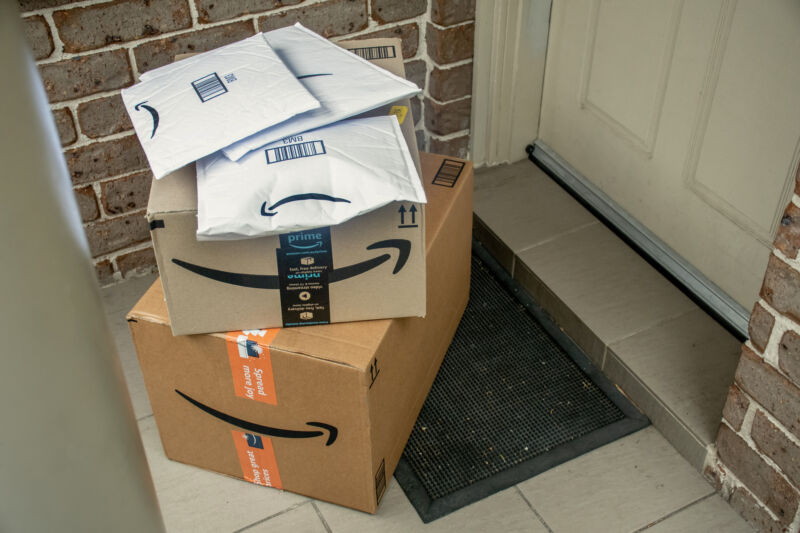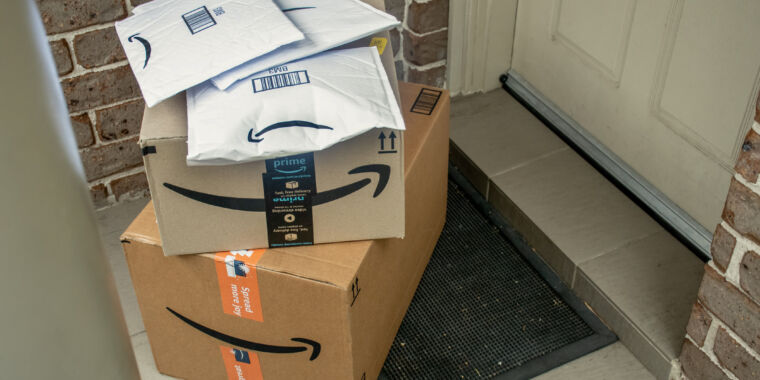
A court has dismissed a proposed class action lawsuit alleging that Amazon's Buy Box was manipulated to defraud customers looking for the best deals on the platform.
The lawsuit follows 2022 antimonopoly investigations in the European Union and the United Kingdom, which found that Amazon's Buy Box had been hiding cheaper items with faster delivery times from sellers using Fulfilled By Amazon (FBA) since 2016.
As a result, Amazon was required to change its Buy Box practices and regain the trust of customers and sellers, the company said in a 2022 blog post. Among the changes, Amazon agreed to treat all sellers equally when offering deals in the Buy Box and to promote a second competing offer when a similar deal is available at a lower price or with faster delivery time.
Those moves apparently didn’t satisfy users who filed suit: Jeffrey Taylor and Robert Selway. They asked the courts to find a “reasonable inference of harm” since they were Amazon customers for years while the price manipulation was taking place. They alleged that “had Amazon not engaged in deceptive conduct with respect to the Buy Box algorithm, plaintiffs and class members would have purchased the lower-priced listings from non-FBA sellers with equal or better delivery.”
But this week, Marsha Pechman, a U.S. district judge in Seattle, told users who filed the lawsuit that it wasn’t enough to provide evidence of proven wrongdoing by Amazon. To succeed in a claim under Washington’s Consumer Protection Act (CPA), they had to show receipts for transactions showing that Amazon charged them higher prices when cheaper items were available. Instead, their complaint appeared to contradict their claim, showing only one example of a Buy Box screenshot that Pechman said showed a hand soap offered by other sellers for prices significantly higher than Amazon’s recommended offer.
“Plaintiffs have failed to adequately demonstrate that they made any specific transaction with Amazon, much less a transaction through the Buy Box,” Pechman wrote in her order. And they “do not allege any specific purchases in which they were deceived through the Buy Box, much less provide receipts.”
That doesn't necessarily end the fight to hold Amazon accountable, however. The judge allowed users to amend their complaints to either “provide information about specific orders (i.e., receipts)” or “make allegations about individual transactions with Amazon.”
Amazon users now have 30 days to track down receipts or otherwise provide evidence of specific transactions in which they were injured, Pechman wrote.
“Without showing a specific transaction, plaintiffs cannot possibly allege that they themselves overpaid for a particular purchase — which is the disputed loss,” Pechman wrote.
Amazon users will likely have a hard time proving that they paid higher prices for items purchased on the platform years ago, something Pechman admitted in her order.
“The court recognizes that plaintiffs may ultimately be unable to prove that they overpaid for specific purchases,” Pechman wrote, but the CPA requires more than a “mere possibility of injury.”
Ars could not immediately contact lawyers for Amazon users seeking comment. Amazon declined to comment.

